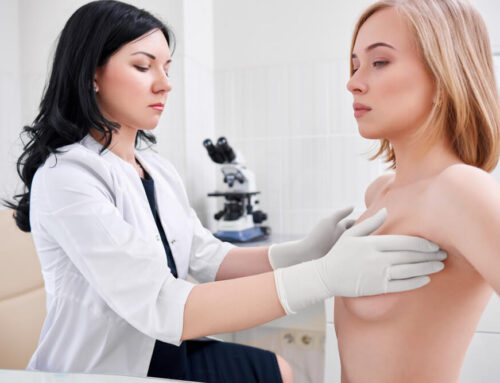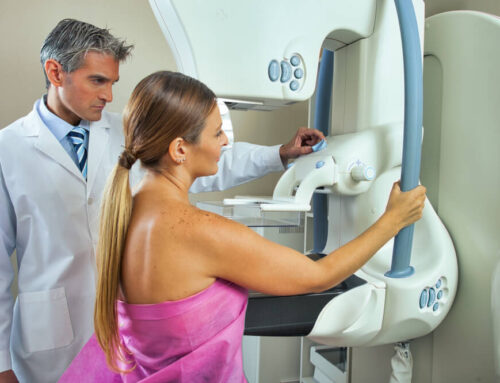Paget’s disease of the breast, a rare form of breast cancer, can often be misunderstood or misdiagnosed due to its uncommon nature and unique symptoms. This detailed guide from Breast Care Center Miami aims to provide a thorough understanding of Paget’s disease of the breast, including its symptoms, progression, and treatment options. Through this information, we hope to offer valuable insights for those seeking knowledge or experiencing symptoms of this condition.
What Is Paget’s Disease of the Breast?
Paget’s disease of the breast is a rare type of cancer that predominantly affects the nipple and, in some cases, the surrounding area, known as the areola. It is named after Sir James Paget, who first identified the condition in 1874. Paget’s disease of the breast is often associated with underlying ductal breast cancer, which can either be in situ (localized and not spread) or invasive (spread beyond the milk ducts).
Identifying Paget’s Disease of Breast Symptoms
One of the critical aspects of early detection and treatment is recognizing Paget’s disease of breast symptoms. The most common symptoms include:
- Changes in the nipple, such as redness, scaling, or flaking skin.
- Itching or tingling sensation in the nipple or areola.
- Yellow or bloody discharge from the nipple.
- In some cases, a lump in the breast.
It is crucial to note that these symptoms can mimic other non-cancerous skin conditions, which is why proper diagnosis is essential.
Understanding Paget’s Carcinoma
Paget’s carcinoma refers to the specific type of cancer cells found in Paget’s disease of the breast. These cells are known for their distinct appearance under a microscope and are typically large with clear halos around them. The presence of these cells in the nipple and areola region is a defining characteristic of Paget’s disease.
Paget’s Disease of the Nipple: More Than Skin Deep
Paget’s disease of the nipple is often mistaken for eczema or dermatitis due to its skin-related symptoms. However, unlike these conditions, Paget’s disease is linked to an underlying breast cancer. Early detection and treatment are crucial, as the condition can progress to more advanced stages if left untreated.

The Progression of Paget’s Disease of the Breast
A common question regarding this condition is: How quickly does Paget’s disease of the breast progress? The progression can vary greatly from person to person. In some cases, it can develop slowly over months or even years, while in others, it may progress more rapidly. Regular breast exams and consultations with healthcare providers are crucial for monitoring any changes or developments.
Diagnosis of Paget’s Disease
Diagnosing Paget’s disease of the breast typically involves several steps:
- Clinical Examination: A thorough examination of the breast and nipple changes.
- Imaging Tests: Mammograms and ultrasounds are used to detect underlying breast cancer.
- Biopsy: A small sample of nipple tissue is examined to identify Paget’s carcinoma cells.
Treatment Options for Paget’s Disease
Treatment for Paget’s disease of the breast usually depends on the underlying breast cancer’s nature and extent. Common treatment options include:
- Surgery: This could involve removing the nipple area or more extensive breast surgery, like mastectomy, depending on the presence and extent of underlying cancer.
- Radiation Therapy: Often used after surgery to eliminate any remaining cancer cells.
- Chemotherapy and Hormone Therapy: These treatments may be recommended in cases where the cancer is invasive or if there are hormone receptor-positive cancer cells.
Prognosis and Survival Rates
The prognosis for Paget’s disease of the breast largely depends on whether the underlying cancer is in situ or invasive and how early the cancer is detected and treated. Generally, the prognosis is better for cases where no lump is present in the breast and if the cancer has not spread.
Living with Paget’s Disease
Being diagnosed with Paget’s disease of the breast can be challenging. It’s essential for patients to seek support from healthcare professionals, support groups, and loved ones. Regular follow-ups and adherence to treatment plans are crucial for managing the condition effectively.
Risk Factors for Paget’s Disease of the Breast
Understanding the risk factors associated with Paget’s disease of the breast can aid in early detection and prevention. While the exact causes remain unclear, certain factors may increase the risk:
- Age: Paget’s disease most commonly affects individuals over the age of 50.
- Gender: Though rare, it can occur in men but is more common in women.
- Personal or Family History: Those with a history of breast cancer or other breast diseases may be at a higher risk.
- Genetic Mutations: Individuals with mutations in certain genes associated with breast cancer, such as BRCA1 and BRCA2, might have an increased risk.
Differentiating Paget’s Disease from Other Skin Conditions
Given that Paget’s disease of the nipple often mimics skin conditions like eczema, distinguishing between them is critical for timely treatment. Unlike eczema, Paget’s disease typically affects only one nipple and does not respond to topical steroids or other eczema treatments. If a persistent skin condition on the nipple does not improve with standard treatments, a biopsy should be considered to rule out Paget’s disease.
Importance of Regular Breast Examinations
Regular breast examinations, both self-exams and clinical exams, are vital for early detection of Paget’s disease of breast symptoms. Women should familiarize themselves with their breasts’ normal look and feel and report any changes, such as nipple discharge or scaling, to their healthcare provider promptly. Mammograms should also be a regular part of a woman’s healthcare regimen, especially if they are in a higher-risk category.

Psychological Impact and Support for Paget’s Disease Patients
The diagnosis of Paget’s disease can have a significant psychological impact on patients. Dealing with the diagnosis, treatment, and physical changes to the breast or nipple can be emotionally challenging. It’s important for patients to have access to psychological support, such as counseling or support groups, where they can share their experiences and feelings. Emotional and psychological support is as crucial as the physical treatment of the disease.
Advancements in Treatment and Research
The medical community continues to make advancements in the treatment and understanding of Paget’s disease of the breast. Research is ongoing into more targeted therapies, with the hope of developing treatments that are more effective and have fewer side effects. These advancements not only aim to improve survival rates but also focus on the quality of life for patients during and after treatment.
Lifestyle and Dietary Considerations
While lifestyle and diet are not direct causes or cures for Paget’s disease, maintaining a healthy lifestyle can support overall health and well-being during treatment. A balanced diet, regular exercise, and avoiding known cancer risk factors like smoking can help in maintaining strength and improving recovery during and after cancer treatment.
Conclusion
Paget’s disease of the breast, while rare, is a serious condition that requires prompt attention and treatment. Understanding Paget’s disease of breast symptoms, the nature of Paget’s carcinoma, and how quickly Paget’s disease of the breast progresses are crucial steps in early detection and treatment. If you or someone you know is experiencing any symptoms, it is vital to seek medical advice immediately for an accurate diagnosis and appropriate treatment plan.






